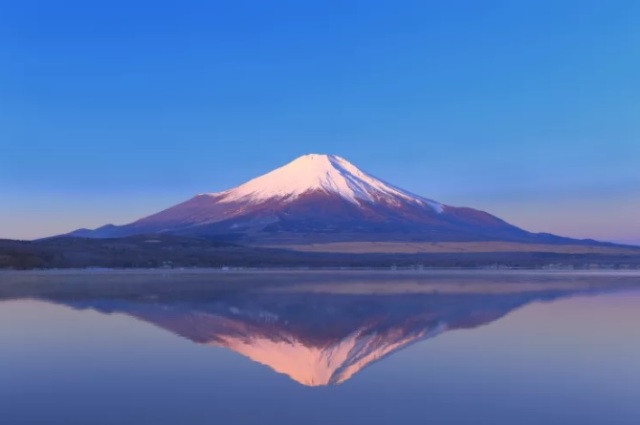Spiritual site, cultural icon and geographical wonder
Standing at 3,776 meters, Mt. Fuji is the tallest peak in Japan, the result of volcanic activity that began approximately 100,000 years ago. Today, Mt. Fuji and the surrounding area are a popular recreational destination for hiking, camping and relaxation.
One of the country's most iconic symbols, travelers from across the world flock to Shizuoka and Yamanashi prefectures to catch a glimpse of this awe-inspiring mountain. For the Japanese, however, Mt. Fuji has long been a site of spiritual importance and a source of artistic inspiration.
An object of worship
Over the centuries, the Japanese have forged a spiritual bond with the mountain. Legend has it that notable religious ascetic Hasegawa Kokugyo (1541-1646) summited the mountain over 100 times. His feats led to the formation of Fuji-ko, a group of likeminded Mt. Fuji worshippers. The sect built shrines, created rock monuments, and fasted to show their dedication. Their fanaticism eventually led the Tokugawa Shogunate to ban the religion, but despite this, Japan's long-standing tradition of mountain worship has ensured the mountain remains revered and respected as a site of spiritual importance.
A site of pilgrimage
Upwards of 300,000 people climb Mt. Fuji every summer. Four major trails provide different approaches to the summit, stopping at rest areas, or “stations,” that offer amenities and lodging along the way. Most hikers time their trip to coincide with the sunrise, hiking in the wee hours of the morning to watch from the top as the sun comes across the horizon. In pre-modern times, Mt. Fuji served as a destination for monks to undergo training, and even the lower classes were known to make pilgrimages here. The numerous shrines at the base of the mountain are a testament to Mt. Fuji's spiritual and historical significance.

